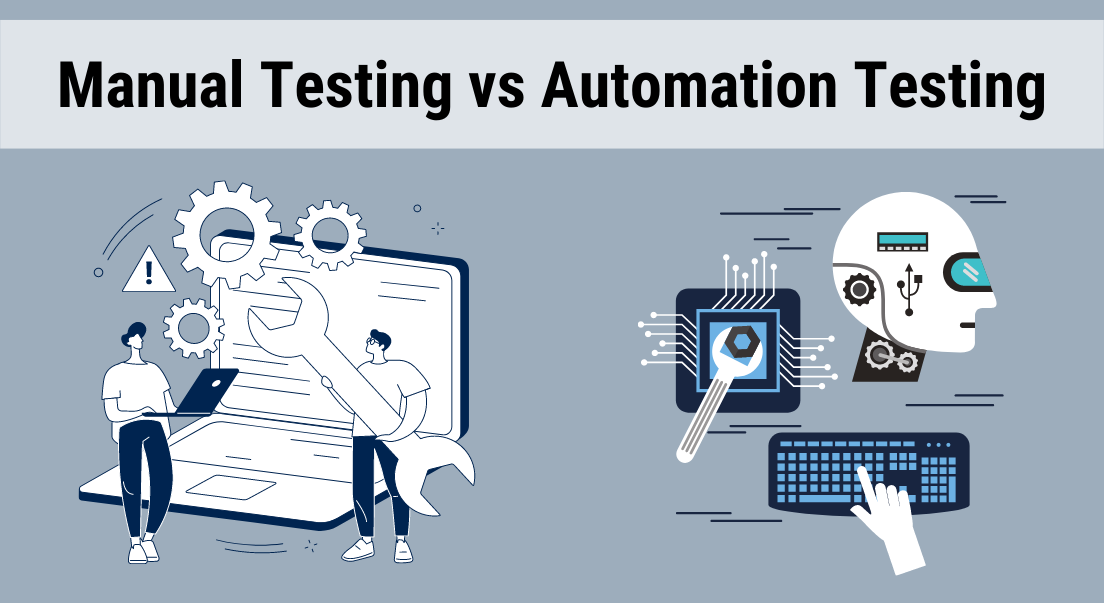Automation Testing Approaches: Ideal Practices for Seamless Integration
Automation Testing Approaches: Ideal Practices for Seamless Integration
Blog Article
From Handbook to Automated Testing: A Comprehensive Guide to Transitioning Efficiently and Successfully
In the world of software testing, the shift from manual to automated processes has become a progressively essential change for companies looking for to boost performance and precision in their screening techniques. As innovation proceeds to advance, the need for seamless and effective automated testing techniques has never been much more pressing. The trip from handbook to automated testing is not without its obstacles, but when approached strategically and with a clear plan in mind, the benefits can be substantial - automation testing. In this thorough guide, we will discover crucial actions and considerations important for an effective change, from the first option of devices to the assimilation of automation into existing workflows. Remain tuned to reveal the insights that will help pave the way for a smoother and extra reliable screening procedure.
Advantages of Automated Examining
Automated screening uses numerous advantages, boosting effectiveness and accuracy in software application growth processes. Automated examinations can be run simultaneously on numerous tools and running systems, substantially speeding up the testing stage contrasted to manual screening.
Moreover, automated testing makes sure a greater level of precision in detecting issues. Consistency in testing is additionally enhanced, as automated examinations perform the very same actions exactly each time they are run.
Selecting the Right Devices

First of all, examine your objectives and requirements. Recognize the range of your task, the innovations included, and the capability of your team. This evaluation will assist you identify the attributes and capabilities you need in your testing tools.
Second of all, take into consideration the compatibility of the tools with your existing procedures and systems. Smooth assimilation with your present software application development lifecycle is vital to make certain a smooth transition to automation.
In addition, assess the scalability and adaptability of the devices. As your testing needs develop, the devices must be able to adjust and accommodate adjustments properly.
Finally, variable in the assistance and area around the devices. Durable assistance and an active user community can give useful sources and assistance when carrying out automated screening. By very carefully thinking about these elements, you can select the right tools that align with your requirements and established the phase for an effective change to automated screening.
Creating Reliable Test Manuscripts

When crafting test scripts, it is necessary to take into consideration the specific requirements of the software being examined and ensure that the scripts deal with all important capabilities. Descriptive and clear calling conventions for test scripts and test situations can enhance readability and maintainability. In addition, incorporating error handling mechanisms within the test manuscripts can aid in recognizing and resolving concerns promptly.
Additionally, organizing examination manuscripts right into modular elements can boost reusability and scalability, minimizing redundancy and enhancing performance in test manuscript maintenance. Regular testimonials and updates to evaluate manuscripts are vital to equal developing software demands and functionalities. By complying with these concepts, testers can produce efficient and robust test manuscripts that contribute significantly to the success of automated screening processes.
Integrating Automation Into Workflows
By seamlessly incorporating automated testing tools like Selenium or Appium into the software program growth lifecycle, groups can accomplish faster feedback on code changes, leading to quicker bug detection and resolution. This integration enables for continual testing throughout the growth procedure, making sure that you could check here any kind of issues are recognized early on, resulting in higher software high quality. Appropriate combination of automation tools requires collaboration between growth, screening, and procedures teams to establish a unified operations that maximizes effectiveness and performance in providing top notch software items.
Making Sure a Smooth Transition
Successfully transitioning to automated testing involves careful planning and careful execution to make the most of and decrease interruptions performance in the software growth process - automation testing. To make sure a smooth transition, it is vital to start by carrying out a complete evaluation of the current testing procedures and determining areas where automation can bring one of the most significant advantages. Engaging with all stakeholders beforehand while doing so, consisting of programmers, testers, and job supervisors, is important for amassing support and buy-in for the automation initiative
Interaction is essential throughout this shift phase. Clear communication of the goals, advantages, and assumptions of automated testing helps to handle any type of resistance or problems that might develop. In addition, giving adequate training and sources for employee to upskill in automation tools and methods is crucial for making sure an effective shift.

Conclusion
Finally, transitioning from guidebook to automated testing provides countless benefits, including raised efficiency and dependability. By choosing the proper devices, creating effective test scripts, and integrating automation effortlessly right into operations, companies can guarantee a effective and smooth shift. It is important to embrace automation as a valuable possession in software application screening processes to improve overall quality and productivity.
In the realm of software application testing, useful link the change from handbook to automated processes has ended up being an increasingly important shift for organizations looking for to boost performance and accuracy in their testing practices. Automated tests can be run concurrently on numerous tools and operating systems, considerably speeding up the screening stage contrasted to hand-operated screening. Uniformity in screening is additionally improved, as automated tests carry out the very same actions precisely each time they are run.To make certain the effective execution of picked testing tools, the creation of effective examination manuscripts plays a critical role in confirming the capability and efficiency of automated processes - automation testing. By following these principles, testers can develop robust and effective examination manuscripts that add considerably to the success of automated testing processes
Report this page